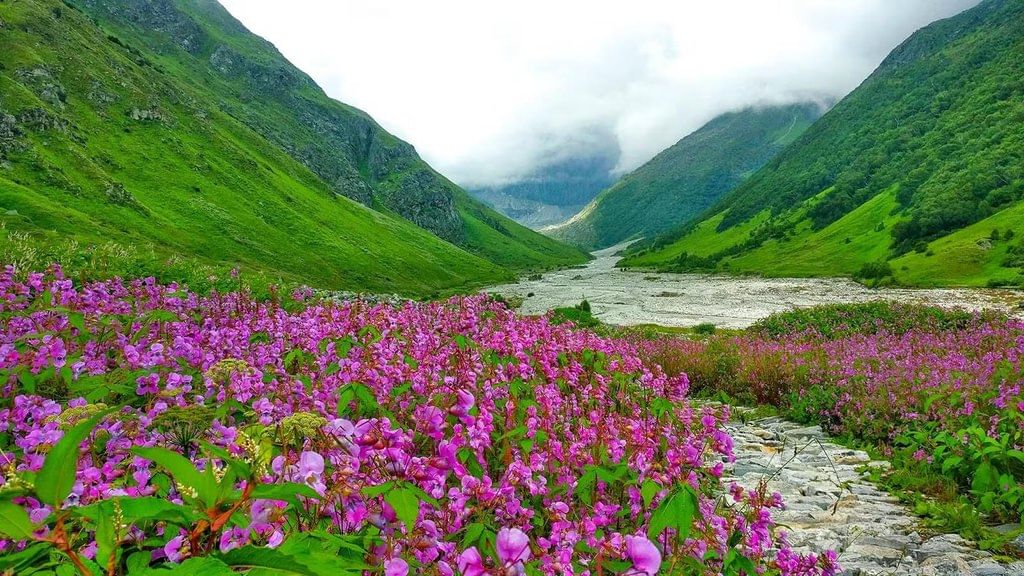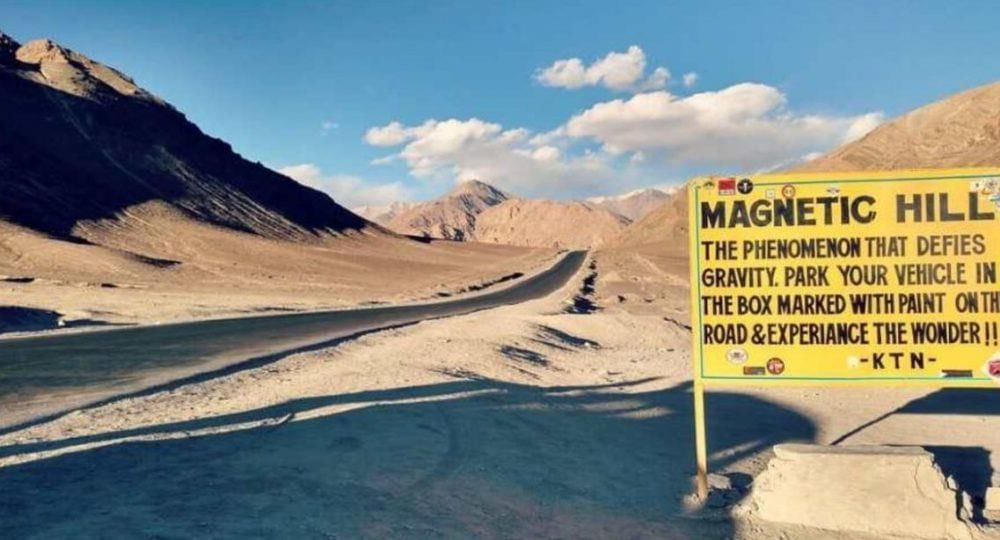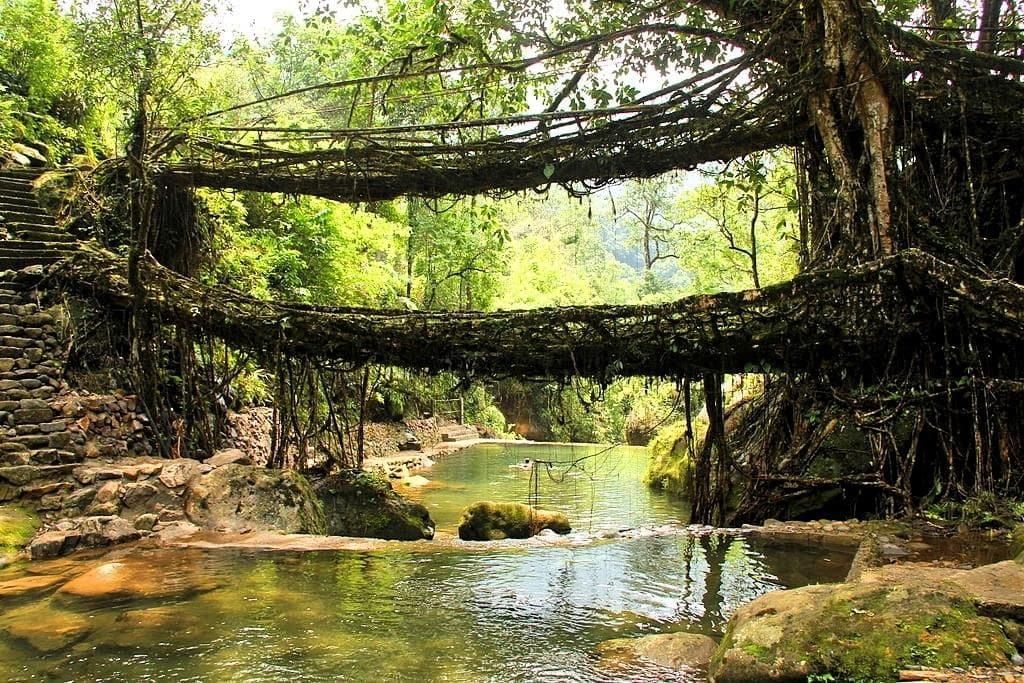Worksheet Solutions: Spectacular Wonders | Worksheets with Solutions for Class 8 PDF Download
| Table of contents |

|
| Multiple Choice Questions (MCQs) |

|
| Fill in the Blanks |

|
| Very Short Answer Questions |

|
| Short Answer Questions |

|
Multiple Choice Questions (MCQs)
Instruction: Select the correct option for each question.
Q1. What makes the Valley of Flowers in Uttarakhand a UNESCO World Heritage Site?
(a) Its large population of snow leopards
(b) Its 600 species of exotic flowers and rare wildlife
(c) Its man-made bridges
(d) Its disappearing sea
Ans: (b) Its 600 species of exotic flowers and rare wildlife
The Valley of Flowers is recognized for its vast variety of exotic flowers and rare wildlife like the snow leopard, making it a botanical and ecological wonder.
 Valley of Flowers
Valley of Flowers
Q2. How are the living root bridges in Meghalaya primarily constructed?
(a) Using cement and stones
(b) With intertwined roots of local flora
(c) From bamboo and wood
(d) By carving into the hillside
Ans: (b) With intertwined roots of local flora
The bridges are made by guiding and intertwining the roots of trees, a natural and innovative solution by the indigenous people to cross waterways.
Q3. What caused the formation of the Lonar Crater Lake in Maharashtra?
(a) A volcanic eruption
(b) A colossal meteorite impact
(c) Heavy monsoon rains
(d) Human excavation
Ans: (b) A colossal meteorite impact
The Lonar Crater Lake was formed thousands of years ago when a meteorite crashed into Earth, creating a unique geological feature.
Q4. What creates the optical illusion at the Magnetic Hill in Ladakh?
(a) A magnetic force pulling vehicles
(b) The alignment of surrounding slopes and horizon
(c) Bioluminescent organisms
(d) Tidal movements of water
Ans: (b) The alignment of surrounding slopes and horizon
The peculiar alignment of slopes and the horizon tricks the eye, making vehicles appear to roll uphill at the Magnetic Hill.
 Magnetic Hill, Ladakh
Magnetic Hill, Ladakh
Q5. What is the primary reason for the glowing waters in Kumbalangi, Kerala?
(a) Artificial lights from the village
(b) Bioluminescence from micro-planktons
(c) Reflection of the moon
(d) Chemical pollution in the water
Ans: (b) Bioluminescence from micro-planktons
The glowing waters are caused by bioluminescence, a chemical reaction in micro-planktons that produces light in the backwaters.
Fill in the Blanks
Instruction: Fill in the blanks with the correct word based on the chapter.
Q1. The Valley of Flowers is located in the ________ district of Uttarakhand.
Ans: Chamoli
The chapter specifies that the Valley of Flowers National Park is in the Chamoli district, known for its floral diversity.
Q2. The living root bridges in Meghalaya are a ________ UNESCO World Heritage Site.
Ans: tangible
The bridges are described as a tangible UNESCO site due to their physical, natural construction by indigenous people.
Q3. The Lonar Crater Lake is unique because it is formed in ________ rock.
Ans: basaltic
The crater is the only one in India formed in basaltic rock by a meteorite impact, as mentioned in the chapter.
Q4. The Sundarbans is a ________ forest in West Bengal.
Ans: mangrove
The Sundarbans is identified as a mangrove forest, with trees rooted in low-oxygen soil in a coastal delta.
Q5. The sea at Chandipur Beach retreats by ________ km during ebb tide.
Ans: 2–5
The chapter notes that the sea at Chandipur Beach moves back 2–5 km during ebb tide, creating its hide-and-seek phenomenon.
 Living Root Bridge, Meghalya
Living Root Bridge, Meghalya
Very Short Answer Questions
Instruction: Answer the following questions in one line.
Q1. Which months are ideal for visiting the Valley of Flowers?
Ans: May to October
Q2. What is the longest living root bridge in Meghalaya said to be?
Ans: 175 feet
Q3. Where is the Lonar Crater Lake located?
Ans: Buldhana district, Maharashtra
Q4. What is the name of the signboard at the Magnetic Hill in Ladakh?
Ans: The Phenomenon That Defies Gravity
Q5. What type of tourism is Kumbalangi village known for?
Ans: Eco-tourism
Short Answer Questions
Instruction: Answer the following questions in 2–3 lines.
Q1. What types of wildlife can be found in the Valley of Flowers?
Ans: The Valley of Flowers is home to rare wildlife like the grey langur, flying squirrel, red fox, lime butterfly, and snow leopard. These species add to the valley’s ecological richness.
Q2. Why were bamboo bridges ineffective in Meghalaya’s waterways?
Ans: Bamboo bridges were futile because they could not withstand the heavy rains and strong waters during monsoons. The living root bridges provided a durable, natural alternative.
Q3. What makes the Lonar Crater Lake visually striking?
Ans: The Lonar Crater Lake’s circular depression with a saline lake contrasts with the rugged terrain around it. This blend of celestial impact and natural beauty creates a stunning sight.
Q4. How does the Magnetic Hill create a unique experience for visitors?
Ans: The Magnetic Hill’s optical illusion makes parked vehicles appear to roll uphill, defying gravity. This fascinating phenomenon, caused by the slope alignment, surprises tourists.
Q5. What role do the mangrove forests of the Sundarbans play in the environment?
Ans: The Sundarbans’ mangrove roots slow tidal waters, stabilizing the coastline and reducing erosion. They support diverse flora and fauna, including the Bengal tiger.
FAQs on Worksheet Solutions: Spectacular Wonders - Worksheets with Solutions for Class 8
| 1. What are some notable natural wonders mentioned in the article? |  |
| 2. How do human activities impact these natural wonders? |  |
| 3. What measures can be taken to protect natural wonders? |  |
| 4. Can you describe the significance of the Great Barrier Reef? |  |
| 5. Why is it important to study and understand natural wonders? |  |



















